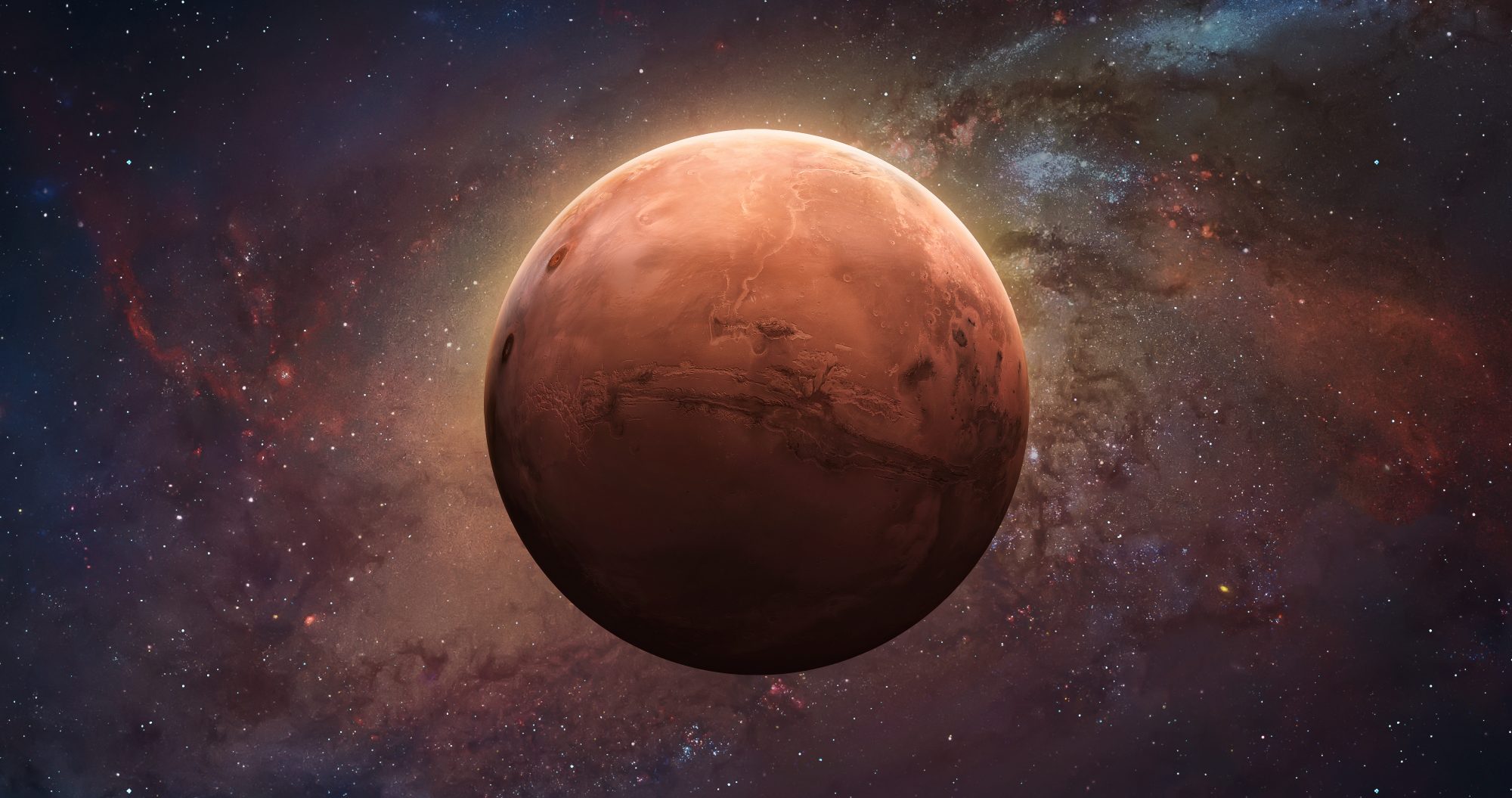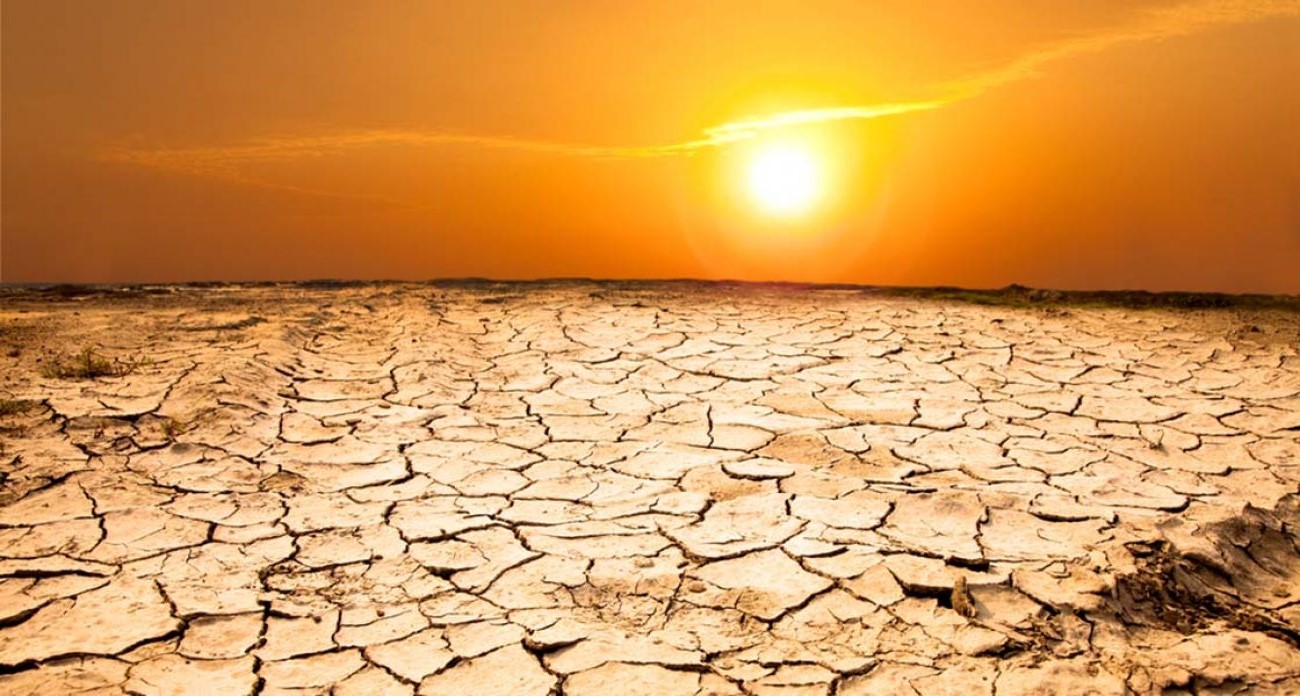Home>Science & Environment>Understanding The Climate Of Mars


Science & Environment
Understanding The Climate Of Mars
Published: February 19, 2024
Explore the climate of Mars and its impact on the planet's environment. Learn about the latest scientific discoveries in the field of science and environment.
(Many of the links in this article redirect to a specific reviewed product. Your purchase of these products through affiliate links helps to generate commission for Temperatures.com, at no extra cost. Learn more)
Table of Contents
Introduction
Mars, often referred to as the "Red Planet," has captivated human imagination for centuries. Its distinct reddish hue, visible to the naked eye from Earth, has sparked countless speculations and scientific inquiries. As the fourth planet from the Sun, Mars has long been a subject of fascination due to its potential to provide insights into the mysteries of our solar system and the broader universe.
The allure of Mars extends beyond its aesthetic appeal. It represents a tantalizing enigma, offering a unique opportunity to study planetary evolution, climate dynamics, and the possibility of extraterrestrial life. Understanding the climate of Mars is a crucial endeavor that not only expands our knowledge of the planet itself but also sheds light on the fundamental processes shaping celestial bodies.
In recent decades, significant advancements in space exploration have enabled unprecedented access to Mars, allowing scientists to gather invaluable data and imagery. These endeavors have unveiled a world that, while seemingly desolate and inhospitable, holds profound significance for our understanding of planetary systems and the potential for habitability beyond Earth.
The study of Mars' climate encompasses a diverse array of disciplines, including atmospheric science, geology, and astrobiology. By delving into the intricacies of its atmosphere, surface conditions, and climate variability, researchers aim to unravel the complex interplay of factors that have shaped the planet over billions of years.
Moreover, the climate of Mars serves as a compelling point of comparison with Earth's climate, offering valuable insights into the mechanisms driving planetary climates and the potential impacts of environmental changes. This comparative approach not only enhances our comprehension of Mars but also enriches our understanding of our own planet's climate dynamics.
As we embark on this exploration of Mars' climate, it is essential to recognize the profound implications of this research. The knowledge gained from studying the Red Planet's climate not only expands the frontiers of scientific understanding but also holds the potential to inform future endeavors in space exploration and the quest for life beyond Earth.
In the subsequent sections, we will delve into the intricate details of Mars' atmosphere, surface conditions, climate variability, and the profound implications of its climate on potential habitability. Through this exploration, we aim to illuminate the captivating intricacies of Mars' climate and its significance in the broader context of planetary science and exploration.
Read more: Understanding The Climate In Texas
The Atmosphere of Mars
The atmosphere of Mars, while significantly different from that of Earth, holds a wealth of scientific intrigue. Composed primarily of carbon dioxide, with trace amounts of other gases such as nitrogen and argon, Mars' atmosphere is markedly thinner than Earth's. This thin atmosphere, with an average surface pressure about 0.6% that of Earth's, has profound implications for the planet's climate and surface conditions.
One of the defining features of Mars' atmosphere is its lack of a robust magnetic field. Unlike Earth, which is shielded by a strong magnetic field generated by its molten core, Mars has a much weaker and patchy magnetic field. This has allowed solar winds to strip away much of the planet's atmosphere over billions of years, contributing to its current thin and tenuous state.
The thin atmosphere of Mars also has significant implications for its climate dynamics. Despite the planet's relatively small axial tilt, which is similar to Earth's, Mars experiences dramatic seasonal variations due to its eccentric orbit. During the planet's winter in the southern hemisphere, carbon dioxide freezes out of the atmosphere, leading to a substantial drop in atmospheric pressure. This process results in the formation of vast polar ice caps, primarily composed of water ice with a veneer of frozen carbon dioxide.
Furthermore, the atmosphere of Mars plays a crucial role in shaping the planet's surface features. Evident in the intricate network of valleys, canyons, and impact craters, the planet's atmospheric conditions have contributed to the erosion and modification of its terrain over geological timescales. The presence of dust storms, some of which can engulf the entire planet, underscores the dynamic nature of Mars' atmosphere and its capacity to influence surface processes.
In recent years, advancements in space exploration have provided unprecedented insights into the complexities of Mars' atmosphere. Orbital missions and lander probes have facilitated detailed measurements of atmospheric composition, temperature profiles, and seasonal changes, offering a comprehensive understanding of the planet's atmospheric dynamics.
The study of Mars' atmosphere not only enriches our understanding of planetary science but also holds implications for future human exploration and potential terraforming endeavors. By unraveling the intricacies of its atmosphere, scientists aim to gain insights into the broader processes shaping planetary climates and the potential for habitability beyond Earth.
In the subsequent sections, we will delve into the captivating details of Mars' surface conditions, climate variability, and the profound implications of its climate on potential habitability, further illuminating the enigmatic nature of the Red Planet.
Surface Conditions
The surface of Mars presents a captivating tapestry of geological features that bear the indelible imprints of its complex history. From expansive plains to towering volcanoes and deep valleys, the Red Planet's terrain offers a window into the dynamic forces that have shaped its landscape over billions of years.
One of the most prominent features of Mars' surface is the presence of vast volcanic constructs, including Olympus Mons, the largest volcano in the solar system. This colossal shield volcano, reaching heights of nearly 22 kilometers (13.6 miles), stands as a testament to the planet's volcanic past. The presence of extensive lava flows and volcanic plains across the Martian surface underscores the profound influence of volcanic activity in shaping the planet's topography.
Moreover, Mars boasts a diverse array of geological formations, including the Valles Marineris, a system of interconnected canyons stretching over 4,000 kilometers (2,500 miles) in length and plunging to depths of up to 7 kilometers (4.3 miles). This expansive canyon system, dwarfing the Grand Canyon on Earth, offers compelling insights into the erosional processes that have sculpted the Martian landscape.
The planet's surface is also adorned with impact craters, remnants of ancient collisions with asteroids and comets. These craters, ranging in size from small indentations to vast basins, provide valuable clues about the frequency and intensity of impacts that have punctuated Mars' history. Additionally, the presence of layered sedimentary rocks in certain regions hints at past interactions between water and sediment, fueling scientific intrigue about the planet's watery past.
Furthermore, the Martian surface exhibits a striking dichotomy between its northern and southern hemispheres. The northern hemisphere is characterized by low-lying plains, while the southern hemisphere is adorned with rugged highlands and cratered terrains. This hemispheric contrast, known as the Martian crustal dichotomy, has spurred extensive scientific investigation to unravel its origins and implications for the planet's geological evolution.
The surface conditions of Mars, as revealed through high-resolution imaging and geological analyses, offer a captivating tableau of geological processes and historical legacies. By scrutinizing the planet's diverse terrains and geological formations, scientists endeavor to unravel the enigmatic narrative of Mars' geological evolution and the forces that have shaped its surface over eons.
In the subsequent sections, we will delve into the intricate details of Mars' climate variability and the profound implications of its climate on potential habitability, further illuminating the captivating nature of the Red Planet's environmental dynamics.
Climate Variability
The climate variability of Mars encompasses a spectrum of dynamic phenomena that underscore the planet's complex atmospheric dynamics and seasonal fluctuations. At the heart of this variability lies the interplay of factors such as axial tilt, eccentric orbit, and atmospheric composition, which collectively shape the planet's climatic patterns.
One of the most striking manifestations of Mars' climate variability is the occurrence of intense dust storms that can engulf vast regions of the planet. These storms, driven by strong winds and the suspension of fine dust particles in the atmosphere, have been observed to expand rapidly, enshrouding the entire planet in a veil of swirling dust. The onset of these storms, often associated with seasonal changes, underscores the dynamic nature of Mars' climate and its capacity to undergo rapid and dramatic transformations.
Furthermore, Mars experiences pronounced seasonal variations, marked by the expansion and retreat of polar ice caps. During the planet's winter in the southern hemisphere, carbon dioxide freezes out of the atmosphere, leading to a substantial drop in atmospheric pressure and the formation of expansive polar ice caps. These seasonal changes, driven by the planet's elliptical orbit, contribute to the dynamic redistribution of atmospheric gases and the modulation of surface albedo, influencing the planet's overall climate.
The planet's axial tilt, similar to Earth's, also plays a pivotal role in driving climate variability. This tilt gives rise to distinct seasonal changes, impacting temperature gradients, atmospheric circulation patterns, and the distribution of volatile compounds across the Martian surface. The interplay of these factors results in a dynamic climate system characterized by seasonal shifts in atmospheric pressure, temperature, and the extent of volatile deposits.
Moreover, Mars' climate variability is intricately linked to the planet's geological and atmospheric processes, including the sublimation and deposition of volatile compounds such as water ice and carbon dioxide. These processes, influenced by seasonal and long-term climatic variations, contribute to the dynamic evolution of the planet's surface features and atmospheric conditions, shaping the intricate tapestry of Mars' climate over geological timescales.
The study of Mars' climate variability not only provides valuable insights into the planet's atmospheric dynamics but also offers compelling parallels with Earth's climate system. By unraveling the complexities of Mars' climate variability, scientists aim to enhance our understanding of planetary climates and the broader mechanisms governing climatic processes across the solar system.
In the subsequent sections, we will delve into the profound implications of Mars' climate on potential habitability, shedding light on the captivating interplay between the planet's environmental dynamics and the quest for extraterrestrial life.
Impact on Potential Habitability
The climate of Mars exerts a profound influence on the planet's potential habitability, serving as a pivotal factor in shaping the environmental conditions that could support life. While the current surface of Mars appears harsh and inhospitable, with its thin atmosphere, extreme temperatures, and intense radiation, the planet's climate dynamics hold intriguing implications for the possibility of habitable environments.
One of the key determinants of potential habitability on Mars is the presence of water, a fundamental requirement for life as we know it. The planet's climate variability, characterized by seasonal changes and the redistribution of volatile compounds, including water ice, has sparked scientific interest in the search for past or present aqueous environments. The detection of recurring slope lineae (RSL) and the identification of ancient river channels and lakebeds provide compelling evidence of Mars' watery past, hinting at the potential persistence of subsurface water reservoirs. The interplay of climate processes, such as sublimation and deposition, contributes to the dynamic cycling of water between the surface and the atmosphere, shaping the potential habitability of specific regions.
Furthermore, Mars' climate variability and the seasonal expansion and retreat of polar ice caps raise intriguing possibilities for the existence of transient habitable zones. The fluctuation of ice deposits, driven by seasonal changes and long-term climatic variations, could unveil regions where liquid water may transiently exist, offering windows of opportunity for habitable conditions. The interplay of climate dynamics, geological features, and the potential for subsurface water sources presents a multifaceted landscape for investigating the habitability of specific Martian environments.
Moreover, the study of Mars' climate holds implications for understanding the broader concept of habitability beyond Earth. By unraveling the intricate interplay of climate processes, volatile cycling, and potential habitable niches on Mars, scientists aim to expand our knowledge of the environmental conditions that could sustain life in extreme environments. This exploration not only enriches our understanding of the potential for life within our solar system but also informs the search for habitable exoplanets and the fundamental principles governing the emergence and sustenance of life in the cosmos.
In essence, the impact of Mars' climate on potential habitability transcends the confines of the Red Planet, offering profound insights into the environmental dynamics that underpin the quest for life beyond Earth. The interplay of climate variability, water cycling, and the potential for habitable niches on Mars embodies a captivating frontier in the exploration of the cosmos and the enduring quest to unravel the mysteries of life in the universe.
Future Research and Exploration
The realm of future research and exploration in the context of Mars' climate encompasses a multifaceted tapestry of scientific endeavors aimed at unraveling the enigmatic mysteries of the Red Planet and charting a course for pioneering exploration. As humanity stands on the threshold of unprecedented advancements in space exploration and scientific inquiry, the prospects for delving deeper into the complexities of Mars' climate and unlocking its profound secrets have never been more promising.
One pivotal avenue of future research revolves around the continued exploration of Mars' atmosphere, leveraging advanced orbital missions and lander probes to glean comprehensive insights into its composition, dynamics, and seasonal variations. By employing cutting-edge instrumentation and remote sensing technologies, scientists aim to unravel the intricate interplay of atmospheric processes, including dust storms, temperature fluctuations, and the cycling of volatile compounds. These endeavors hold the potential to deepen our understanding of Mars' atmospheric dynamics and their implications for the planet's climate evolution.
Furthermore, future research initiatives are poised to delve into the geological and geomorphological aspects of Mars' surface, seeking to unravel the enigmatic narratives embedded within its diverse terrains. High-resolution imaging, geological surveys, and in-situ analyses are poised to unveil the geological history of Mars, shedding light on the forces that have sculpted its landscape and the potential indicators of past habitable environments. These endeavors hold the promise of unraveling the planet's geological evolution and the implications for its climate dynamics over geological timescales.
In tandem with scientific research, the prospect of future exploration initiatives, including crewed missions and robotic ventures, stands as a beacon of human ingenuity and ambition. The envisioned missions to Mars, propelled by the collective efforts of space agencies and private enterprises, hold the potential to revolutionize our understanding of the planet's climate and the prospects for habitability. By venturing into uncharted territories and establishing sustained presence, humanity aims to conduct in-depth investigations into Mars' climate, surface conditions, and the potential for supporting life.
Moreover, future research and exploration on Mars are poised to transcend the confines of scientific inquiry, serving as a catalyst for technological innovation and the advancement of human capabilities in space. The development of advanced instrumentation, life support systems, and sustainable habitats represents a testament to the transformative impact of Mars exploration on technological frontiers.
As humanity embarks on this odyssey of discovery and exploration, the future of Mars' climate research and exploration holds the promise of unraveling the profound enigmas of the Red Planet, shaping the trajectory of planetary science, and inspiring generations to venture beyond the confines of our home planet in pursuit of cosmic horizons.














